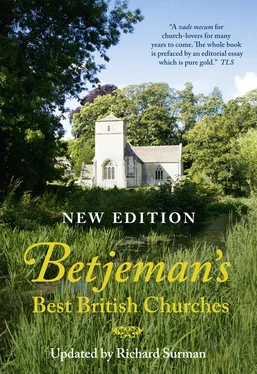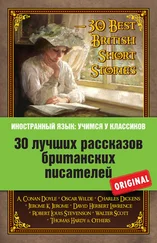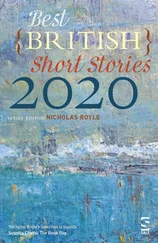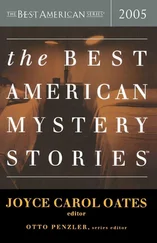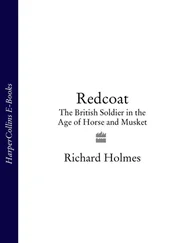Sympathetic descriptive accounts of unrestored churches are rarely found in late Georgian or early Victorian prose or verse. Most of the writers on churches are antiquarians who see nothing but ancient stones, or whose zeal for ‘restoration’ colours their writing. Thus for instance Mr John Noake describes White Ladies’ Aston in Worcestershire in 1851 (The Rambler in Worcestershire, London, Longman and Co., 1851). ‘The church is Norman, with a wooden broach spire; the windows, with two or three square-headed exceptions, are Norman, including that at the east end, which is somewhat rare. The west end is disgraced by the insertion of small square windows and wooden frames, which, containing a great quantity of broken glass, and a stove-pipe issuing therefrom impart to the sacred building the idea of a low-class lodging house.’ And writing at about the same time, though not publishing until 1888, the entertaining Church-Goer of Bristol thus describes the Somerset church of Brean:
‘On the other side of the way stood the church – little and old, and unpicturesquely freshened up with whitewash and yellow ochre; the former on the walls and the latter on the worn stone mullions of the small Gothic windows. The stunted slate-topped tower was white-limed, too – all but a little slate slab on the western side, which bore the inscription:
JOHN GHENKIN
Churchwarden
1729
Anything owing less to taste and trouble than the little structure you would not imagine. Though rude, however, and old, and kept together as it was by repeated whitewashings, which mercifully filled up flaws and cracks, it was not disproportioned or unmemorable in aspect, and might with a trifling outlay be made to look as though someone cared for it.’
Such a church with tracery ochred on the outside may be seen in the background of Millais’ painting The Blind Girl. It is, I believe, Winchelsea before restoration. Many writers, beside Rimmer, regret the restoration of old churches by London architects in the last century. The despised Reverend J. L. Petit, writing in 1841 in those two volumes called Remarks on Church Architecture, illustrated with curious anastatic sketches, was upbraided by critics for writing too much by aesthetic and not enough by antiquarian standards.
He naturally devoted a whole chapter to regretting restoration. But neither he nor many poets who preceded him bothered to describe the outside appearance of unrestored village churches, and seldom did they relate the buildings to their settings. ‘Venerable’, ‘ivy-mantled’, ‘picturesque’ are considered precise enough words for the old village church of Georgian times, with ‘neat’, ‘elegant’ or ‘decent’ for any recent additions. It is left for the Reverend George Crabbe, that accurate and beautiful observer, to recall the texture of weathered stone in The Borough, Letter II (1810):
But ’ere you enter, yon bold tower survey
Tall and entire, and venerably grey,
For time has soften’d what was harsh when new,
And now the stains are all of sober hue;
and to admonish the painters:
And would’st thou, artist! with thy tints and brush
Form shades like these? Pretender, where thy brush?
In three short hours shall thy presuming hand
Th’ effect of three slow centuries command?
Thou may’st thy various greens and greys contrive
They are not lichens nor light aught alive.
But yet proceed and when thy tints are lost,
Fled in the shower, or crumbled in the frost
When all thy work is done away as clean
As if thou never spread’st thy grey and green,
Then may’st thou see how Nature’s work is done,
How slowly true she lays her colours on . . .
With the precision of the botanist, Crabbe describes the process of decay which is part of the beauty of the outside of an unrestored church:
Seeds, to our eye invisible, will find
On the rude rock the bed that fits their kind:
There, in the rugged soil, they safely dwell,
Till showers and snows the subtle atoms swell,
And spread th’ enduring foliage; then, we trace
The freckled flower upon the flinty base;
These all increase, till in unnoticed years
The stony tower as grey with age appears;
With coats of vegetation thinly spread,
Coat above coat, the living on the dead:
These then dissolve to dust, and make a way
For bolder foliage, nurs’d by their decay:
The long-enduring ferns in time will all
Die and despose their dust upon the wall
Where the wing’d seed may rest, till many a flower
Show Flora’s triumph o’er the falling tower.

WILLEN: ST MARY – a Classical church of the 1670s by Robert Hooke, it points the way to the Georgian interiors of the following century
© Michael Ellis
Yet the artists whom Crabbe admonishes have left us better records than there are in literature of our churches before the Victorians restored them. The engravings of Hogarth, the water-colours and etchings of John Sell Cotman and of Thomas Rowlandson, the careful and less inspired records of John Buckler, re-create these places for us. They were drawn with affection for the building as it was and not ‘as it ought to be’; they bring out the beauty of what Mr Piper has called ‘pleasing decay’; they also shew the many churches which were considered ‘neat and elegant’.
It is still possible to find an unrestored church. Almost every county has one or two.
The Georgian Church Inside
There is a whole amusing literature of satire on church interiors. As early as 1825, an unknown wit and champion of Gothic published a book of coloured aquatints with accompanying satirical text to each plate, entitled Hints to Some Churchwardens. And as we are about to enter the church, let me quote this writer’s description of a Georgian pulpit: ‘How to substitute a new, grand, and commodious pulpit in place of an ancient, mean, and inconvenient one. Raze the old Pulpit and build one on small wooden Corinthian pillars, with a handsome balustrade or flight of steps like a staircase, supported also by wooden pillars of the Corinthian order; let the dimensions of the Pulpit be at least double that of the old one, and covered with crimson velvet, and a deep gold fringe, with a good-sized cushion, with large gold tassels, gilt branches on each side, over which imposing structure let a large sounding-board be suspended by a sky-blue chain with a gilt rose at the top, and small gilt lamps on the side, with a flame painted, issuing from them, such Pulpits as these must please all parties; and as the energy and eloquence of the preacher must be the chief attraction from the ancient Pulpit, in the modern one, such labour is not required, as a moderate congregation will be satisfied with a few short sentences pronounced on each side of the gilt branches, and sometimes from the front of the cushion, when the sense of vision is so amply cared for in the construction of so splendid and appropriate a place from which to teach the duties of Christianity.’
And certainly the pulpit and the high pews crowd the church. The nave is a forest of woodwork. The pews have doors to them. The panelling inside the pews is lined with baize, blue in one pew, red in another, green in another, and the baize is attached to the wood by brass studs such as one may see on the velvet-covered coffins in family vaults. Some very big pews will have fire-places. When one sits down, only the pulpit is visible from the pew, and the tops of the arches of the nave whose stonework will be washed with ochre, while the walls will be white or pale pink, green or blue. A satire on this sort of seating was published by John Noake in 1851 in his book already quoted:
Читать дальше
